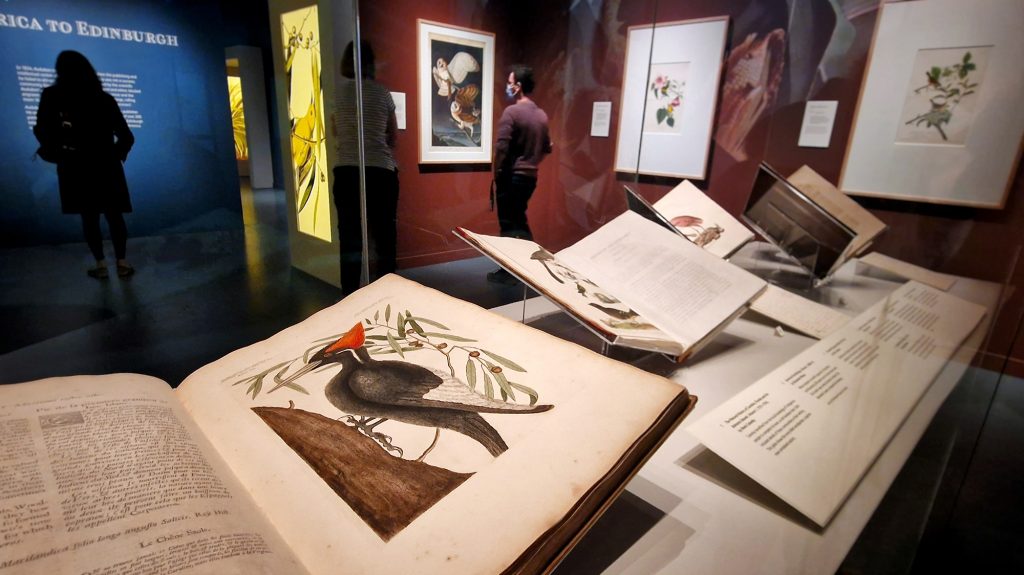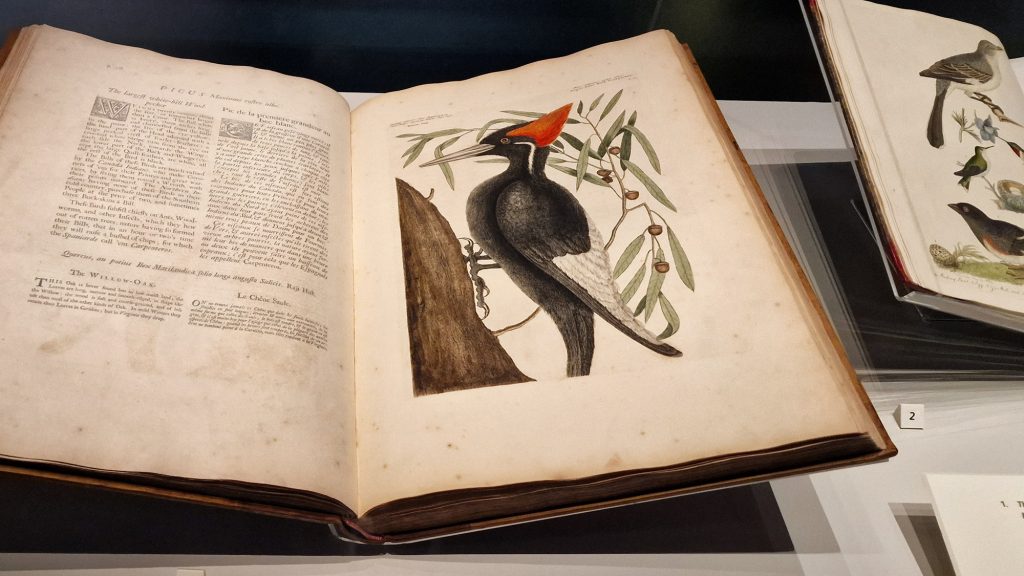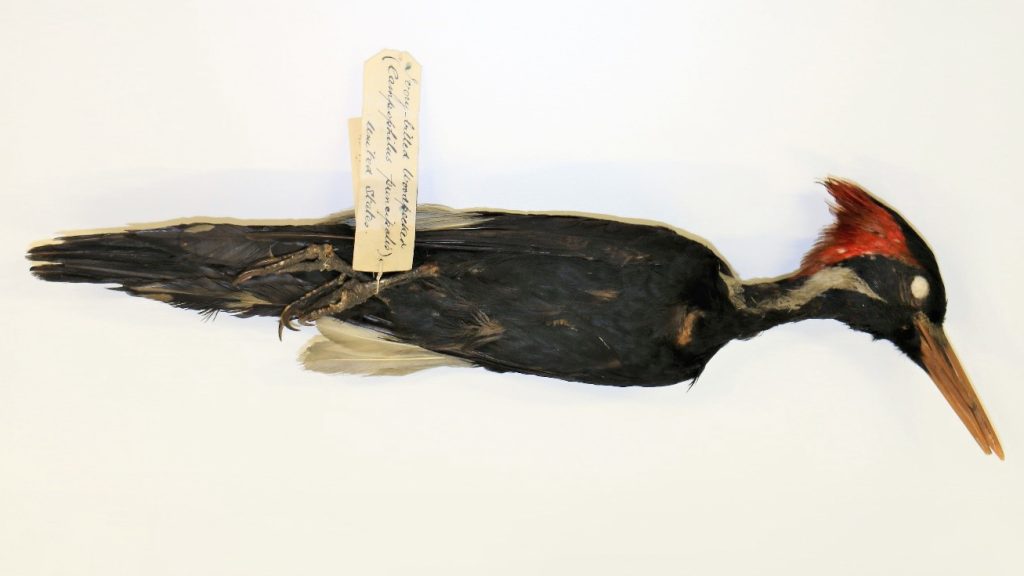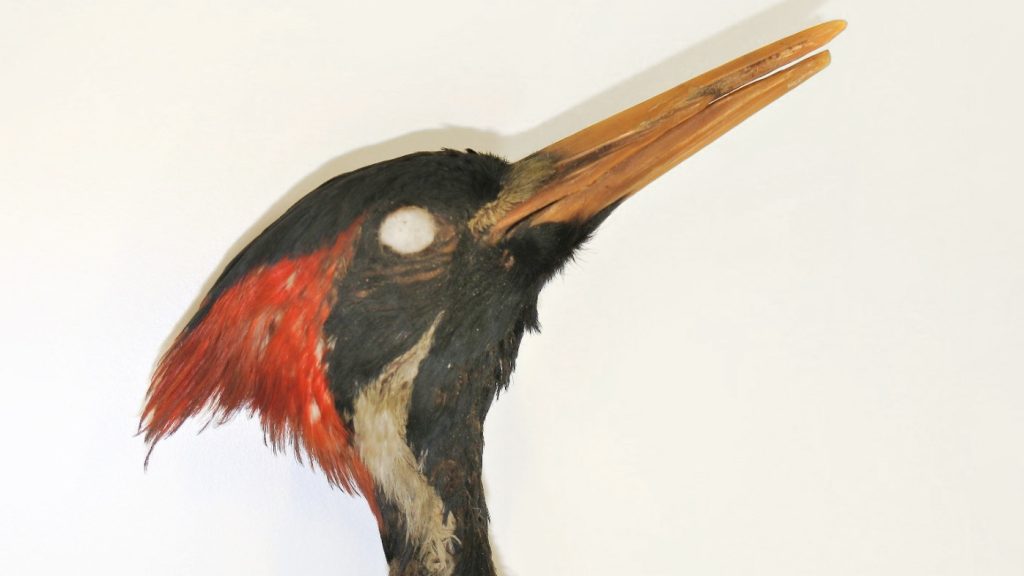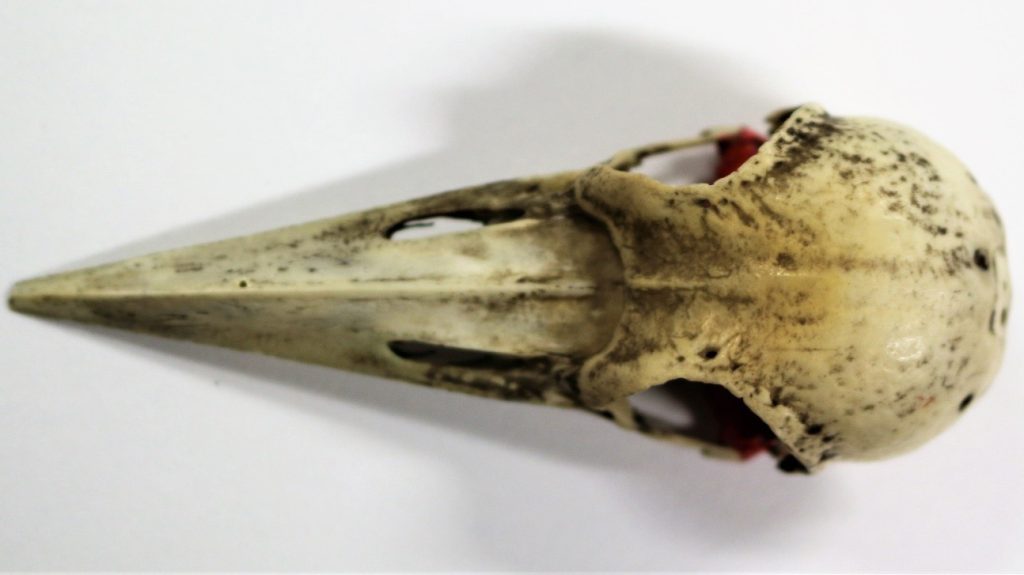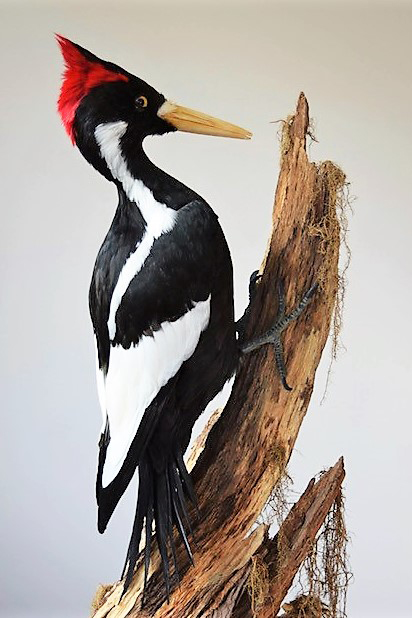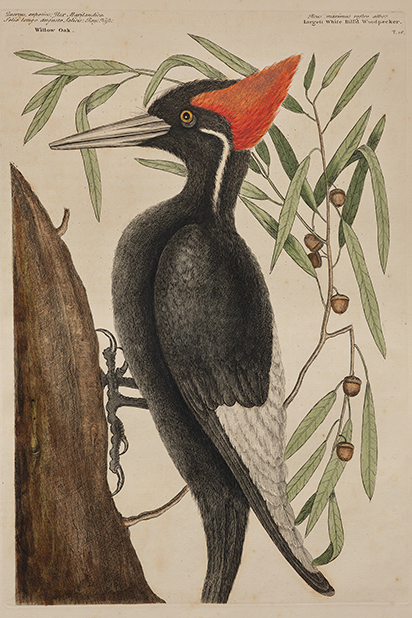With COP 15 taking place in China this month, Principal Curator of Vertebrates Andrew Kitchener explores the case of the ivory-billed woodpecker. Thought to be extinct, but with potential sightings still reported, this bird is just one of many species we’re at risk of losing forever.
Updated on 19 April 2022 by the Secretariat of the Convention on Biodiversity. The second part of COP 15 will now take place in the third quarter of 2022 (dates to be determined)
John James Audubon’s Birds of America is famous for its huge double elephant folio plates showing life-sized prints of all North American birds known in the early 19th century. You can see a selection of them in the exhibition Audubon’s Birds of America at the National Museum of Scotland until 8 May 2022. Although not on display, one of Audubon’s most striking prints is Plate 66, which shows a pair of ivory-billed woodpeckers, Campephilus principalis.
One of the largest known woodpeckers in the world, it measured up to more than half a metre in length and had a wingspan of up to 76 cm. In September 2021, the US Fish and Wildlife Service announced that it was among 23 species that would be removed from the US Endangered Species List because it is thought to be extinct. Once found in bottomland hardwood forests across the south eastern USA, loss of habitat due to logging and the collecting of birds led to its apparent disappearance by the middle of the 20th century.
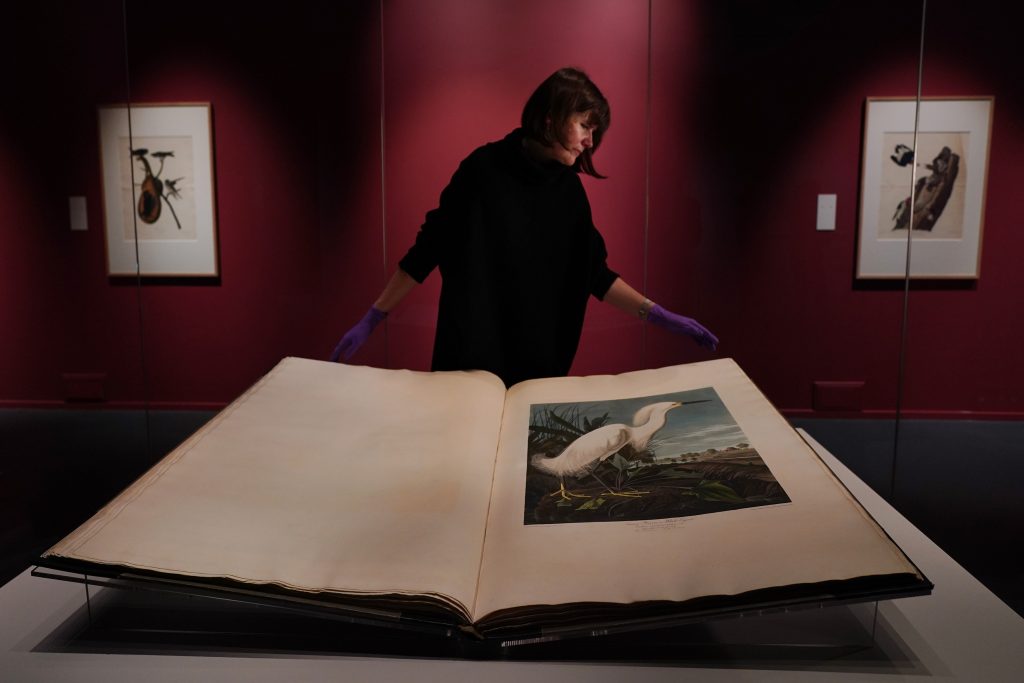
The last known ivory-billed woodpecker was seen in 1944 on a tract of land owned by the Singer Sewing Company in northeast Louisiana. The area had been almost completely logged when this last bird was seen, so it probably did not survive for long. Sightings, photographs and videos of ivory-billed woodpeckers have been claimed since then.
A single feather was recorded from a damaged nest hole in 1969, so perhaps a few individuals did manage to survive later. In 2004, the ivory-billed woodpecker grabbed headlines once again when birds were apparently seen and videoed in Arkansas. Despite thorough searches this record could not be verified and some ornithologists were sceptical. They thought the birds were actually pileated woodpeckers, Dryocopus pileatus.
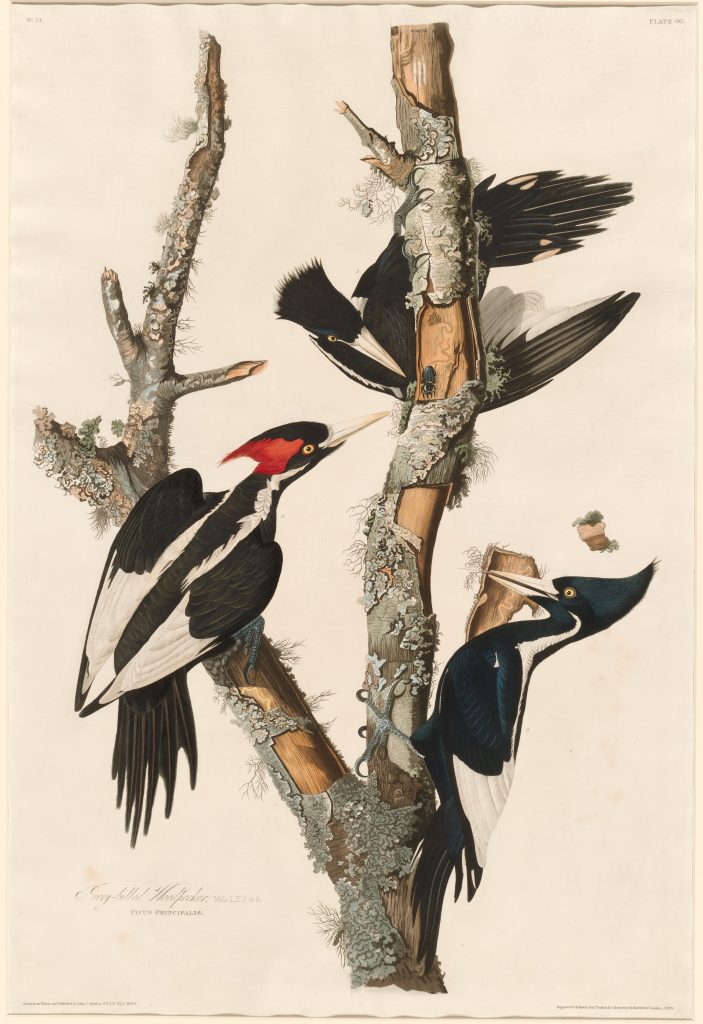
After public consultation, in September 2022 the US Fish and Wildlife Service will decide whether the ivory-billed woodpecker is officially extinct, along with 22 other species of animal and plant. This is just one extinction of many.
Scientists around the world are concerned that we are on the brink of a mass extinction, caused by our relentless exploitation of Earth’s resources. The United Nations Convention on Biological Diversity (CBD) came into force in December 1993 with the aim of halting the catastrophic loss of the world’s species, genetic resources and ecosystems. One hundred and ninety-five countries, plus the EU, are signatories of the CBD. They meet regularly to revise and recommit to the CBD’s original aims (as well as those of the Cartagena Protocol on Biosafety and the Nagoya Protocol on Access and Benefit-sharing). The Conference of the Parties 15, better known as COP 15, is the 15th meeting to update the CBD.
From 25 April to 8 May 2022 delegates from countries around the world are meeting in Kunming, China for the second part of COP 15 (delayed due to COVID-19). The main aim of COP 15 is to review the achievements and delivery of the CBD’s Strategic Plan for Biodiversity 2011-2020. Other activities include taking a final decision on the post-2020 global biodiversity framework alongside decisions on related topics, such as capacity building and resource mobilisation.
The current situation, especially with the added impact of accelerated global climate change, means that it is even more important that the world’s nations take effective action to prevent biodiversity loss and work together to restore the natural world for everyone’s benefit. If COP 15 is unsuccessful, we may have to face many more sad stories of disappearing species.
In a drawer in the Bird Section at the National Museums Collections Centre, is a rather tattered but still spectacular skin of a male ivory-billed woodpecker with his vivid red crest. Previously on display, the mounted skin has been relaxed as it is too precious to display anymore. We know nothing of its history, although it probably dates from the first half of the 19th century.
Alongside it is the skull of an ivory-billed woodpecker rescued from an educational display about bird anatomy. Parts of the underside of the skull are painted red, blue and white to illustrate particular bones of the skull. Sadly, this is all we have left in Edinburgh to remind us of one the world’s most spectacular birds. In future we may have to imagine what the ivory-billed woodpecker was like from reconstructions such as those made by taxidermist Derek Frampton. If we do not take action now to prevent extinctions, many more species will only be represented by models, video and photographs.
The ivory-billed woodpecker was in the news just last week, with some ornithologists claiming to have seen and photographed one in Louisiana. Maybe the future of this species is not quite as final as we once thought. Perhaps this gives us hope for other species too, but we must act now.

